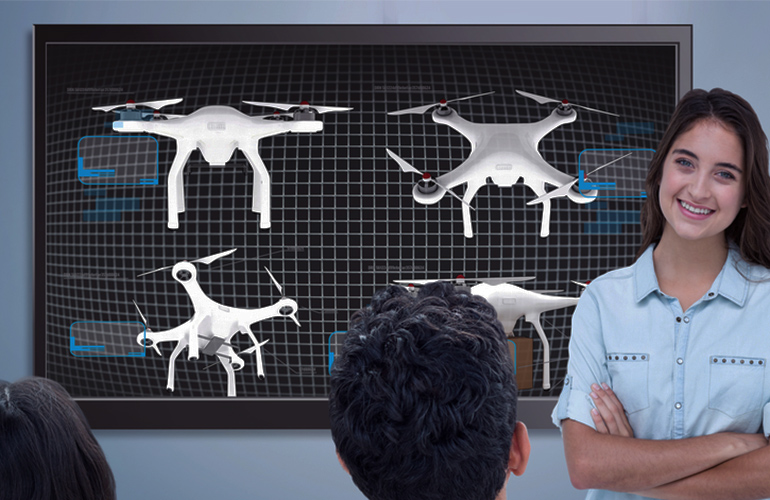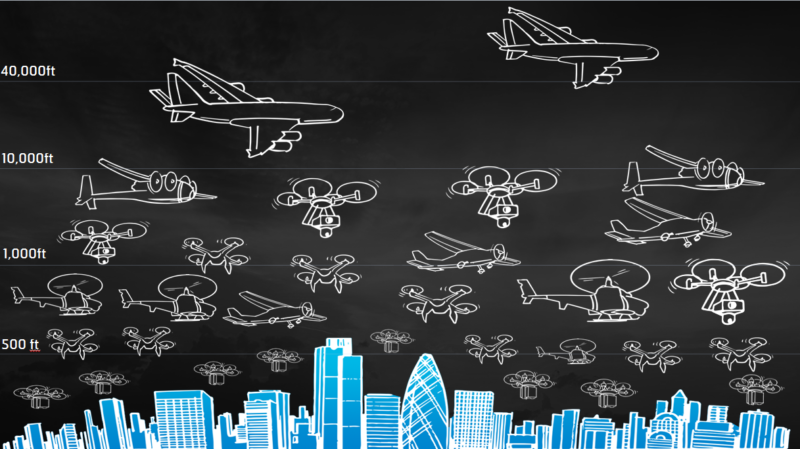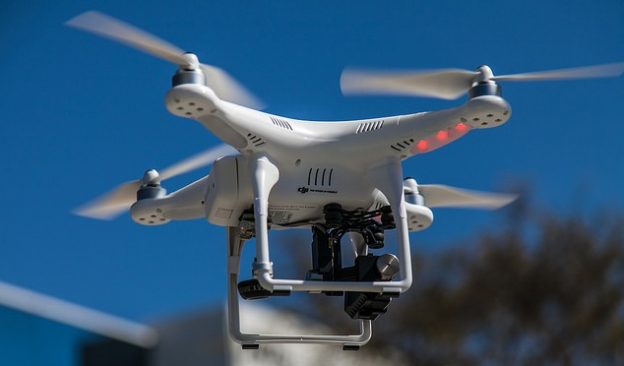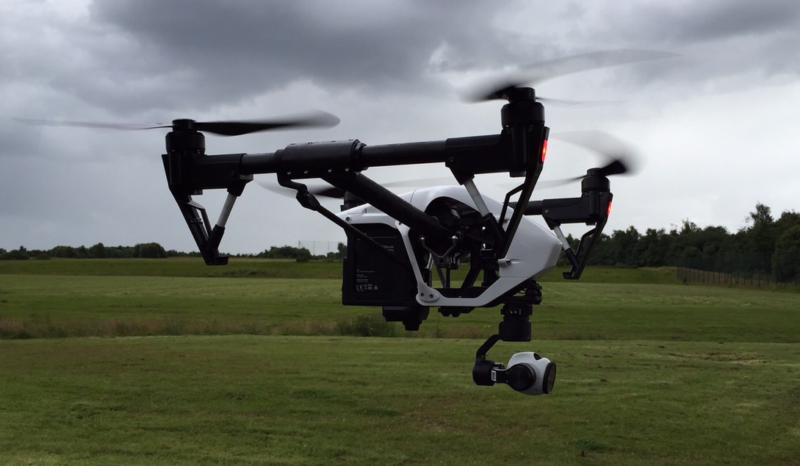Guest post: Education is key to drone safety
5 October 2016Drones have amazing possibilities, but to ensure they are able to live up to their future potential they have to be flown safely now.
Unfortunately the number of reports from pilots indicating that a drone had flown too close to their aircraft is on the rise. Many people flying drones have little or no knowledge of aviation, or what happens in the airspace above them. And until they brought a drone there was no reason why they should. But once you start flying something in the UK’s complex airspace it’s really important that you have a knowledge of the simple do’s and don’ts. That’s why we’ve kicked off a wide-ranging education programme for drone users.
Very soon we’ll be re-launching the UK dronecode which offers simple advice for safe flying. As part of the re-development of the code we talked to drone users to understand their views on the current regulations and the kind of information they want. Making sure it will be fit for purpose.
We’ll be at the Drone Show in December; we’ve been working hard with the media to ensure safety messages appear in drone articles in publications like photography magazines and we’re about to launch a really exciting competition, all to help spread the word.
Another exciting plan being developed is to work with school science teachers to provide them with drone kits for students to build in lessons. As they learn how drones work they also learn how to fly drones safely.
We’re working with NATS, the wider aviation industry and, really importantly, drone users, manufacturers and those selling drones to make sure the advice is what people really want and it reaches as many drone users as possible.
All the work is aimed at safety education. We want to be helpful and proactive. But if there are incidents where people have caused an incident by flying unsafely then they also need to know the penalties that they could face – including prison.
Christmas is an obvious period for us to be out and about with the drone safe flying message and we’ll be running a media campaign to get as much about good drone flying into articles when there’s lots of potential new drone users around.
But this isn’t a quick fix. In communication terms what we’re running is a behavioural change programme, similar to the drink drive campaign or the well-known stop, look listen road safety advice. These take time to break through into common knowledge with the general public. So we’re in it for the long-term!
This is the biggest drone education campaign ever in the UK and with the combined support of the aviation and drone communities we’re really hopeful that it can play a part in ensuring the future of drones.
So, look out for the exciting initiatives to come. Enjoy your drone (I love flying them when I can!) and please, fly safely.
Comments
Please respect our commenting policy and guidelines when posting on this website.





07.10.2016
16:20
Gary Stewart
Good afternoon.
Are you able to offer any assurances that this new directive being put forward by the EASA won’t be implemented in the UK in its current form and we will be able to stick with the far more sensible CAA Drone Code? The draconian measures proposed by the EASA are horribly restrictive for drone users and would totally ruin the hobby for many. Cutting down flight area to 50 meters vertically and 100 meters horizontally.
http://www.haku.co.uk/pics/EASA_Restriction.jpg
I had planned on buying a new drone this month, but I’m reluctant to pay £1,250 for a paperweight.
Thank you for any input you can offer.
Regards
Gary.
12.10.2016
12:07
Jonathan Nicholson
Assistant Director Communications, Civil Aviation AuthorityThanks for your message and your thoughts on the recently proposed EASA Prototype Rules. Your points are well noted.
It is important that everyone with an interest makes their comments heard so that the final regulations that come out of Europe (prompted by EASA) are appropriate for all small UAS users, be they recreational or commercial. Therefore please could you take a small amount of time to send your comments directly to EASA (an address for comments was included on the EASA website with the prototype rules [email protected] ).
Please do this soon as the consultation closes shortly and also encourage any friends and colleagues to do the same, as the volume of responses made to EASA has a significant bearing on their subsequent actions – we will be sending back our own comments to EASA shortly too. And to reiterate the CAA is committed to the development of simple, proportionate and above all, easy to understand small UAS regulations.
12:07
Jonathan Nicholson
Assistant Director Communications, Civil Aviation Authority20.10.2016
09:51
Peter Galbavy
The language used in the current ANO is mostly unchanged from the previous editions and related derogations and is welcome, but it still needs work. My personal bugbear is the vague and ambiguous use of “congested areas” which I believe is detrimental to clear and transparent rule making by those in charge of public space, like local authorities and police forces.
The current UAV rules still nod their hat largely at traditional model aircraft that need much more room for take off and landing and are unable to hover. The more popular contemporary multi-rotor drones can be used far more safely with the appropriate education and mentoring in limits spaces.
In my view the Australian’s have got it right in their most recent publications, e.g. https://www.casa.gov.au/modelaircraft and their reduced requirements for commercial operation of smaller RPAs (their UAVs) at https://www.casa.gov.au/standard-page/commercial-unmanned-flight-remotely-piloted-aircraft-under-2kg.
They, CASA, use statements like
* You must not fly closer than 30 metres to vehicles, boats, buildings or people.
* You must not fly over populous areas such as beaches, heavily populated parks, or sports ovals while they are in use.
* In controlled airspace, which covers most Australian cities, you must not fly higher than 120 metres (400 feet) above the ground.
* You must not fly in a way that creates a hazard to other aircraft, so you should keep at least 5.5 km away from airfields, aerodromes and helicopter landing sites.
and in the latter page:
* You must not fly your RPA over any area where, in the event of a loss of control or failure, you create an unreasonable hazard to the safety of people and property on the ground
Why can’t the CAA take this kind of clear and concise approach?
24.02.2017
11:24
Jonathan Small
Hi Jonathan,
This is very interesting and timely article.
I am a Group Scout Leader at an Air Scout group. I am planning a camp where we are making some balsa/rubber band plane models. The Scouts asked if they could bring their drones. I said no – but realised how many of them had drones.
I am very interested to see the package that you are putting together for Schools as I believe it would be very useful for Scouts as well.
Do you have any ideas for an engaging session with the Scouts? I have contacting another local Air Scout group to see if we can double up the numbers.
Thanks
Jonathan Small
GSL
49th Bournemouth Air Scouts